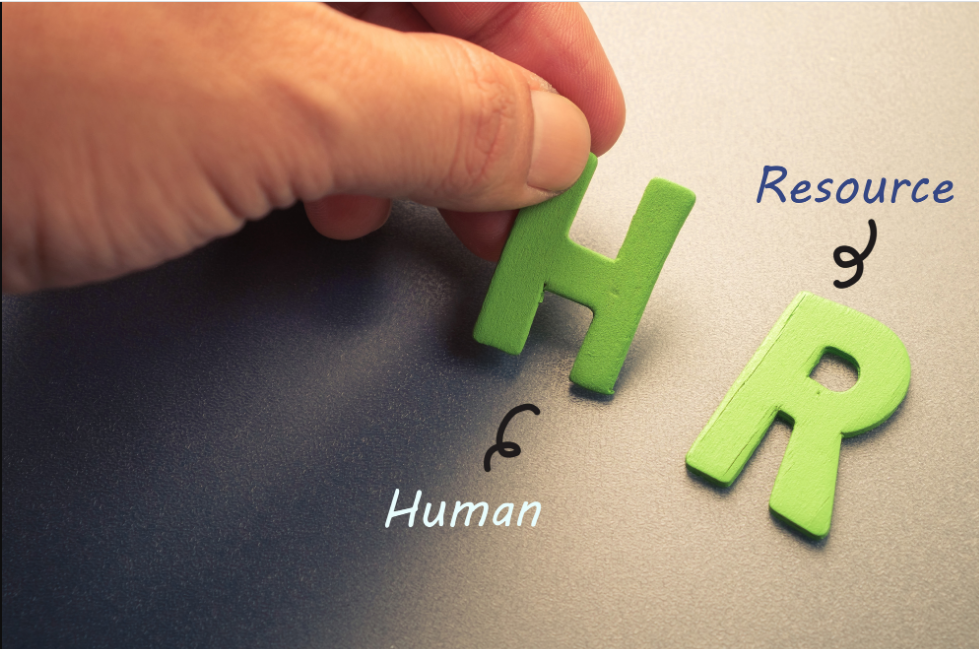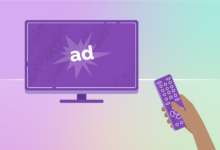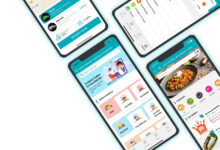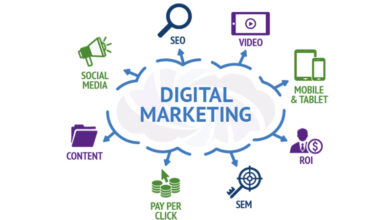
5 Key Features to Look for in HR Onboarding Software
New hires with great onboarding experience are 18 times more committed to their employers.
These employers have a high employee engagement and retention rate. Their companies thrive despite the ongoing great resignation. Your business should invest in HR onboarding software to keep up with these companies.
You want to streamline new hires’ onboarding process, to improve employee retention.
Here’s what HR onboarding software is and the five key features to guide you choose the best one.
Table of Contents
What Is HR Onboarding Software?
HR onboarding software is a technology that helps companies facilitate a smooth transition for new employees. This software assists the new hires in learning a company’s setup and culture quickly. Also, it shares resources that help the new employees understand what’s expected of them.
This software aims to undertake a paperless employee onboarding process and increase engagement. It’s easy to collect new hires’ personal details with this software. Also, this software offers a convenient and easy way to communicate with new employees.
Here are some of the benefits of using HR onboarding software:
• Switch to paperless onboarding
• A consistent employee onboarding process
• High compliance levels
• Enhance accountability
• Easy to integrate with payroll system
• Simplify remote workers’ onboarding process
• Reduce the cost of onboarding a new employee
• Protect new hires’ personal data
• Increase new employees’ productivity
Now that you know what HR onboarding software is, here’s how to find the best one for your organization.
1. User-Friendliness
New hires have varying computer skills, so investing in a friendly onboarding software is crucial. The idea is to choose software that anyone can learn to use without formal training.
Here are some of the things to help you check the user-friendliness of a given HR onboarding software.
User Interface
Go for HR onboarding software with a simple and clean user interface. An intuitive user interface with easy navigation. Your goal is to make it easy for the HR team and new hires to learn how to use this software.
Number of Clicks
Before you get HR onboarding software:
1. Count the number of clicks it takes to access different features.
2. Choose software that users can access features with two or three clicks.
3. Look for onboarding software with short-cut functions for accessing various features.
Your goal is to make it fast for new hires and HR teams to access this software’s features.
Customization Options
To enhance the ease of use, check the personalization options of a given onboarding software. You want to tailor this software’s user interface to improve user-friendliness. Also, look for software that you can add more features to meet your company’s onboarding needs.
Mobile Friendliness
Most new hires prefer to use their mobile devices to access onboarding materials. So, to streamline the onboarding process, invest in mobile-friendly onboarding software. You want to ensure that all new hires can access the onboarding software.
Process Flow
When testing the user-friendliness of HR onboarding software, check the ease of moving from one feature to another. Avoid software that the user has to keep going back to the home page to access another feature. Your goal is to pick an onboarding system that users can seamlessly access different features.
Integration Options
Your company should invest in onboarding software that you can integrate with other HR tools. You want to simplify data sharing to increase productivity. Compare the integration options different onboarding software offers to decide the best one to get.
To get more insights on the user-friendliness of a given HR onboarding software, check out online reviews. The reviews will help you learn about other users’ experiences. Your goal is to choose software with a great user experience.
A user-friendly software will make it easy to transition to a paperless onboarding process. The HR team will enjoy using this software as it’ll increase their productivity levels.
2. Remote Access
An effective onboarding process starts before the new hire’s first day. Employers use this period to educate new hires about their companies and cultures. So, how can you carry out onboarding before the new hire’s first day?
The answer is to undertake online onboarding. The idea is to use the internet to communicate with the new hires remotely. Invest in remote onboarding software to achieve this goal.
To test the remote accessibility of HR onboarding software, check out these things.
Multi-User Access
You must check how many people can use the remote onboarding software without any problems. Your goal is to choose software that offers multi-user access. You want to make it easy for the HR team and the new hires to use this software at the same time.
The ideal onboarding software should accommodate many users without crashing or lagging.
To streamline the use of this software, look for ways to assign responsibilities. You want to specify which features users can access and the ones they cannot. Your goal is to avoid giving certain users permission to features they can mess up.
Data Security
Using online onboarding software may expose your company to cyber-attacks. Hackers might take advantage of this software’s connection to the internet to access sensitive business data. You need to check the data security of this software to mitigate these risks.
Your goal is to get online onboarding software that employs modern data encryption measures. You want to ensure that only authorized persons can access data from this software. Also, caution your HR team and new hires from using public Wi-Fi to access the online onboarding software.
Support
New hires and the HR team may face problems using the online onboarding software. The software may fail to start or load certain functions. When this happens, they need to know who to call for support.
That’s why you should look for an online onboarding software provider who offers 24/7 support.
To know more about remote onboarding software, check out WorkBright.com. You want to get insights into how this software works and its benefits.
3. Social Learning Support
One way new hires will learn about your company’s culture is through social interactions. Find an onboarding software with social learning support to enhance this form of learning. This software enhances informal and social interactions between new hires and existing employees.
It makes it easy for the new hires to assimilate to the company’s objectives and cultures quickly.
Here are some of the things that enhance onboarding software’s social learning support.
Built-In Messaging App
Most new hires are too shy to ask the HR manager questions directly. They feel the questions are “silly,” and they’ll figure out the answers on their own with time. Unfortunately, these new hires take forever to learn the company’s practices and cultures.
Your company should invest in onboarding software with a built-in messaging app to counter this challenge. You want to set up a channel where the new hires can freely ask questions. This channel offers an informal yet effective way for the new employees to get information about your company.
Also, the built-in messaging app makes it easy for new hires to interact with existing employees. So, even before their first day, the new hires already have insights into how your company operates. They know who to contact when they face any challenge during the onboarding process.
Onboarding Buddy Feature
After their first week, new employees with buddies were 23 percent more satisfied with the onboarding process than those without buddies. Most companies assign a buddy/mentor after a new hire has been with them for weeks. Unfortunately, the new employee has a poor onboarding experience by the time they do it.
Your company should avoid this pitfall by starting the buddying process before the new hire’s first day. To streamline this process invest in onboarding software with a buddy feature. Your goal is to assign the new hire a mentor/buddy even before they start working for you.
So, to enhance social learning, look for software with built-in messaging and buddy programs. These programs will offer the new employees social and informal ways to learn about your company’s culture. Also, they have a platform to socialize with other employees and start making workplace friends.
4. Data Analysis and Reporting Tools
Your company should invest in onboarding software that helps you track employee training. The idea is to collect data that helps you gauge the onboarding experience. So, look for HR onboarding software with build-in metrics.
You want to use these metrics to measure the new hires’ engagement and satisfaction levels. The idea is to carry out employee NPS tests to measure satisfaction. You want to find whether new employees would recommend your company as a workplace.
Also, the onboarding software should track how long HR managers and new hires take to complete tasks. You want to ensure everything is going according to the schedule. So, invest in software that sends alerts for incomplete tasks and low engagement scores.
Your goal is to take corrective action quickly to ensure that a new hire completes all onboarding asks. Also, you want to know what’s causing the low engagement scores and take appropriate actions. Your goal is to resolve onboarding problems early to enhance employee retention.
Finally, look for HR onboarding software that generates regular reports. The idea is to use these reports to measure the effectiveness of your onboarding process. You want to get data that highlights problem areas.
Your goal is to work on things that negatively affect the new hires’ onboarding process. You want to make these employees’ onboarding process as smooth as possible. Work with your HR team to search for onboarding software with the right metrics.
5. Continuous Improvement
Finally, you should invest in HR onboarding from a company that strives for continuous improvement. The idea is to keep improving this software to meet your changing employee onboarding needs.
Here are some of the things to help you measure HR onboarding software’s continuous improvement capabilities.
Build-In Surveying Tools
The top onboarding software providers value their clients’ inputs. These providers create software solutions with built-in survey tools. Their goal is to give your company a chance to rate the onboarding software’s functionalities.
Also, they want to hear your opinions on ways they can improve the software. They want to improve software’s user-friendliness and security. Also, they’re seeking data on new reporting tools to add to the software.
These things aim to create HR onboarding software that perfectly meets clients’ needs.
Updates Frequency
The other way to measure the onboarding software provider’s commitment to continuous improvement is by checking update frequency. The top providers are constantly looking for ways to improve the onboarding software. So, they’ll send notifications for updates regularly.
These updates will improve the onboarding software’s security, thereby improving cybersecurity. Also, the updates will enhance the software’s functionality, improving the overall onboarding experience. Using this software will enhance your company’s onboarding process.
So, compare different onboarding software track records to decide which one to get for your company.
Utilize Modern Technology to Streamline Employee Onboarding Process
Your company should look for ways to utilize technology to improve the employee onboarding process. The idea is to ensure that new hires have a great onboarding experience, increasing their commitment to your company. So, invest in HR onboarding software to achieve these goals.
Rely on the above things to find the ideal HR onboarding software for your company. You want to choose a user-friendly onboarding software with remote access. Also, look for software with built-in onboarding analysis and reporting tools.
Enjoyed this piece? Great! Then, check out the rest of our blog for similar content.








